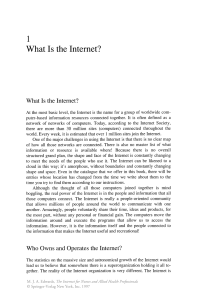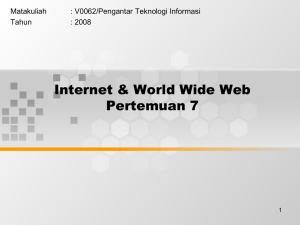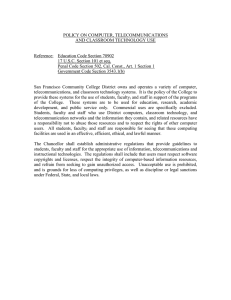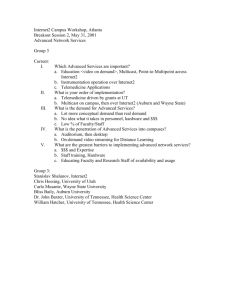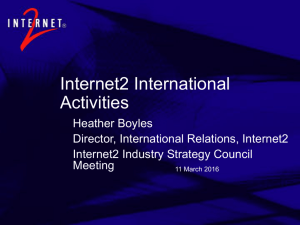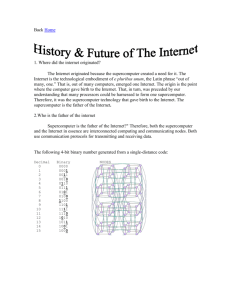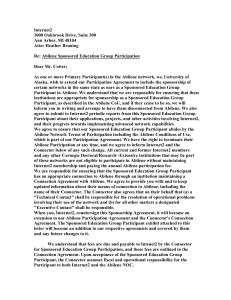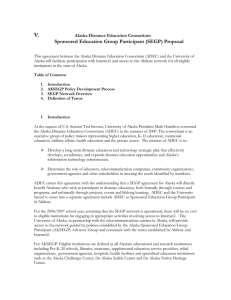INF 390N.1 Fall 2009 Doty
advertisement
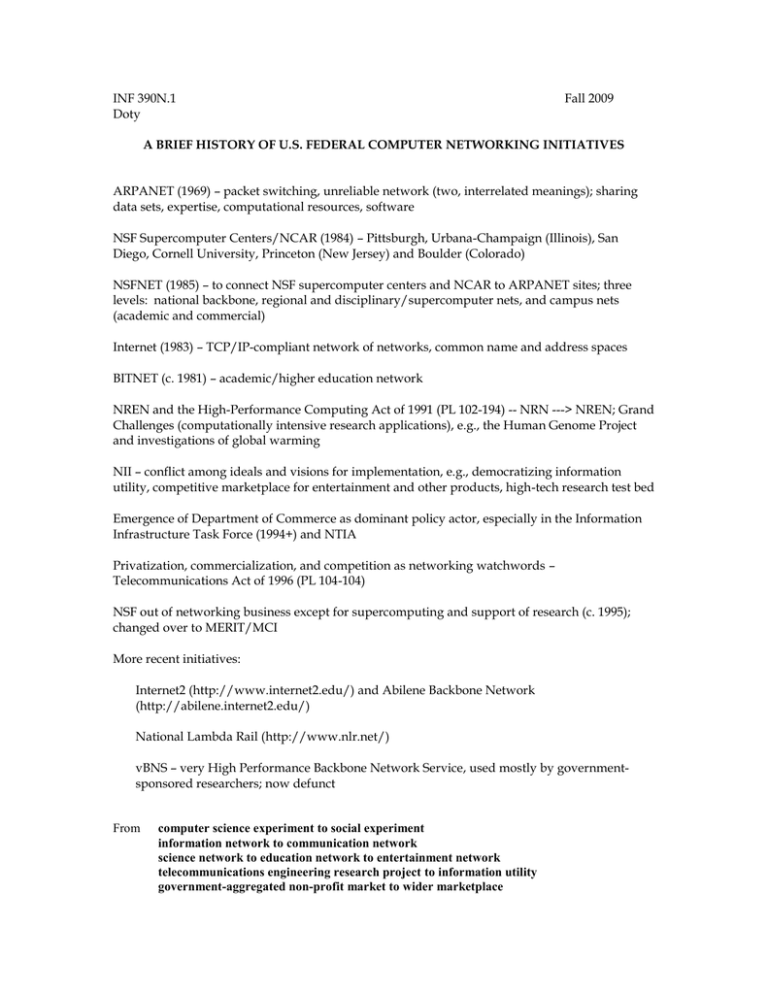
INF 390N.1 Doty Fall 2009 A BRIEF HISTORY OF U.S. FEDERAL COMPUTER NETWORKING INITIATIVES ARPANET (1969) – packet switching, unreliable network (two, interrelated meanings); sharing data sets, expertise, computational resources, software NSF Supercomputer Centers/NCAR (1984) – Pittsburgh, Urbana-Champaign (Illinois), San Diego, Cornell University, Princeton (New Jersey) and Boulder (Colorado) NSFNET (1985) – to connect NSF supercomputer centers and NCAR to ARPANET sites; three levels: national backbone, regional and disciplinary/supercomputer nets, and campus nets (academic and commercial) Internet (1983) – TCP/IP-compliant network of networks, common name and address spaces BITNET (c. 1981) – academic/higher education network NREN and the High-Performance Computing Act of 1991 (PL 102-194) -- NRN ---> NREN; Grand Challenges (computationally intensive research applications), e.g., the Human Genome Project and investigations of global warming NII – conflict among ideals and visions for implementation, e.g., democratizing information utility, competitive marketplace for entertainment and other products, high-tech research test bed Emergence of Department of Commerce as dominant policy actor, especially in the Information Infrastructure Task Force (1994+) and NTIA Privatization, commercialization, and competition as networking watchwords – Telecommunications Act of 1996 (PL 104-104) NSF out of networking business except for supercomputing and support of research (c. 1995); changed over to MERIT/MCI More recent initiatives: Internet2 (http://www.internet2.edu/) and Abilene Backbone Network (http://abilene.internet2.edu/) National Lambda Rail (http://www.nlr.net/) vBNS – very High Performance Backbone Network Service, used mostly by governmentsponsored researchers; now defunct From computer science experiment to social experiment information network to communication network science network to education network to entertainment network telecommunications engineering research project to information utility government-aggregated non-profit market to wider marketplace Public policy rationale given for U.S. public $$$ to support high-tech research: (1) facilitate competitiveness across the economy (2) to help computing, telecommunications, cryptographic, and other businesses succeed (3) to help support U.S. hegemony in defense and surveillance technologies.
